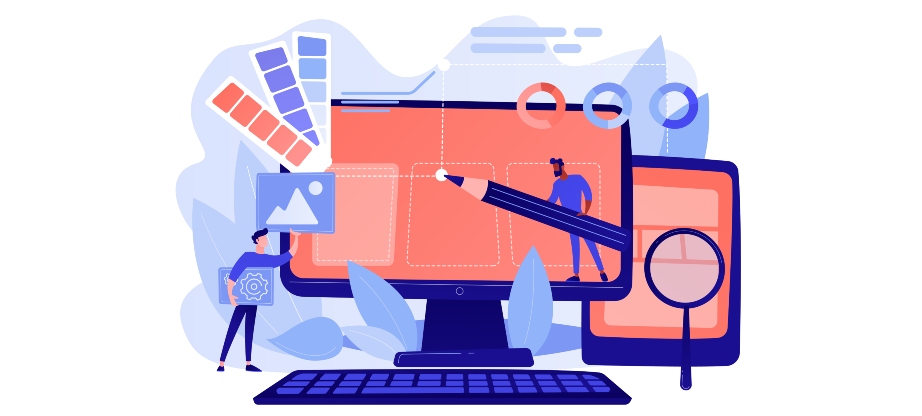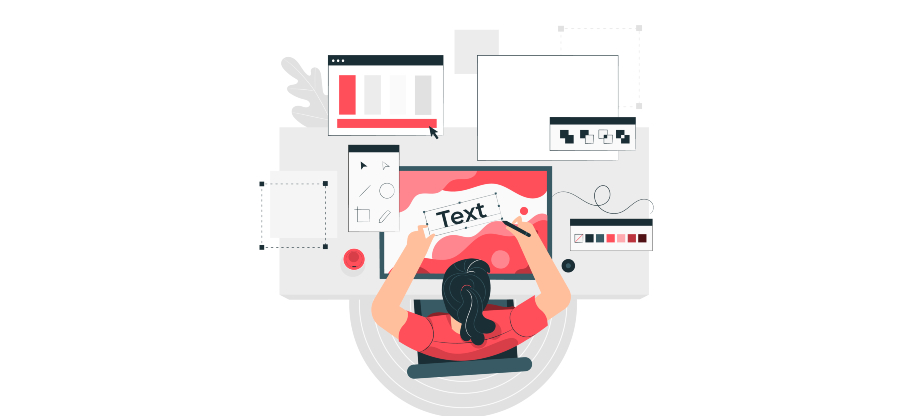The Future of Graphic Design: Emerging Technologies and Trends
Graphic design has been an important aspect of visual communication for decades. From print media to digital platforms, graphic design has played a significant role in shaping our experiences of products, services, and brands. As we move into the future, emerging technologies and changing cultural trends are shaping the way we think about graphic design and the possibilities it offers.
It’s important for graphic designers to stay up-to-date with emerging technologies and trends in order to remain competitive and relevant in a rapidly evolving industry. By keeping abreast of the latest developments in graphic design, designers can ensure that their work remains fresh, innovative, and effective.
In this article, we’ll explore some of the most promising emerging technologies and trends in graphic design, and discuss the skills and knowledge that designers will need to succeed in the future. We’ll also provide actionable advice and resources for designers who want to stay current with the latest developments in the field.
Emerging Technologies in Graphic Design
One of the most exciting aspects of graphic design is the way it interacts with emerging technologies. As new technologies become available, graphic designers have more tools at their disposal to create innovative and impactful designs. Here are some of the most promising emerging technologies in graphic design:
- AI – Artificial intelligence (AI) is transforming the way we think about design. With machine learning algorithms that can recognize patterns and make predictions, AI is becoming an increasingly important tool for designers. AI can help designers automate repetitive tasks, analyze large amounts of data, and even generate designs on their own.
- AR/VR – Augmented reality (AR) and virtual reality (VR) is revolutionizing the way we interact with digital media. These technologies allow designers to create immersive experiences that blur the line between the physical and digital worlds. With AR/VR, designers can create interactive designs that respond to user input, or even create entire virtual environments that users can explore.
- 3D Printing – 3D printing is changing the way we think about manufacturing, and it’s also transforming the way we think about design. With 3D printing, designers can create physical objects that were previously impossible to manufacture. This technology opens up new possibilities for product design, architecture, and even fashion.
Trends in Graphic Design
In addition to emerging technologies, there are also many trends in graphic design that are shaping the future of the industry. Here are some of the most significant trends to watch:
- Minimalism – Minimalism has been a popular design trend for several years now, and it shows no signs of slowing down. Minimalist designs are characterized by simple shapes, monochromatic color schemes, and lots of negative space. This trend is popular because it allows designers to create clean, elegant designs that are easy to understand and navigate.
- Maximalism – On the opposite end of the spectrum of minimalism is maximalism. Maximalist designs are characterized by bold colors, complex shapes, and lots of visual elements. This trend is popular because it allows designers to create designs that are visually stimulating and attention-grabbing.
- Bold Typography – Typography has always been an important aspect of graphic design, but in recent years, designers have been experimenting with bolder, more daring typography. From hand-drawn lettering to ultra-thin typefaces, designers are using typography to make a statement and create a strong visual impact.
Future Skills and Knowledge for Graphic Designers
As new technologies and trends emerge in the world of graphic design, designers will need to acquire new skills and knowledge in order to remain competitive. Here are some of the skills and knowledge that will be essential for graphic designers in the future:
- Coding – As more design work is done for digital platforms, designers will need to have a basic understanding of coding in order to create effective designs. HTML, CSS, and JavaScript are all important coding languages for designers to learn.
- UX Design – User experience design (UX) is becoming increasingly important in the world of graphic design. Designers will need to understand how to create designs that are not only visually appealing but also functional and easy to use. This will require a deep understanding of user psychology, usability testing, and user interface (UI) design principles.
- Data Analysis – As AI becomes more prevalent in the world of graphic design, designers will need to understand how to work with data. They will need to know how to gather and analyze data in order to create effective designs that resonate with their target audience.
- Adaptability – Perhaps most importantly, graphic designers will need to be adaptable and open-minded in order to keep up with the rapidly evolving field. They will need to be willing to learn new skills and experiment with new technologies and trends in order to stay relevant.
Action Plan Examples
Graphic designers must keep up with the latest technologies and trends to stay competitive in today’s fast-paced industry. Below are some action plan examples that designers can use to remain current:
Attend Conferences and Workshops
Attending conferences and workshops is an excellent way for designers to stay up to date with emerging technologies and trends. These events provide opportunities to learn from experts in the field, network with other designers, and gain exposure to new tools and techniques. Some conferences and workshops that designers can consider attending include Adobe MAX, HOW Design Live, and AIGA Design Conference.
Participate in Online Design Communities
Online design communities, such as Behance, Dribbble, and Creative Market, offer designers a platform to showcase their work, connect with other designers, and gain inspiration from others. These communities also provide access to resources and tutorials that can help designers learn new skills and stay current with emerging trends.
Read Design Blogs and Publications
Design blogs and publications, such as Smashing Magazine, Creative Bloq, and Design Observer, offer designers insights into the latest design trends, emerging technologies, and best practices. By regularly reading these resources, designers can stay informed and up to date with the latest developments in the field.
Take Online Courses and Tutorials
Online courses and tutorials, such as those offered by Lynda.com, Skillshare, and Udemy, provide designers with opportunities to learn new skills and techniques. These resources offer a convenient and flexible way for designers to stay current with emerging technologies and trends.
Practical Tips and Resources 
Implementing these action plans can help designers stay current with emerging technologies and trends. Here are some practical tips and resources for implementing these action plans:
Schedule Time for Professional Development
Designers should schedule time for professional development activities, such as attending conferences, participating in online communities, and reading design blogs and publications. By making these activities a priority, designers can stay current and maintain a competitive edge in the industry.
Create a Professional Development Plan
Designers should create a professional development plan that outlines their goals and objectives for staying current with emerging technologies and trends. This plan should include specific actions and timelines for achieving these goals.
Use Social Media to Stay Informed
Social media platforms, such as Twitter, Instagram, and LinkedIn, offer designers opportunities to stay informed about emerging technologies and trends. By following industry leaders and influencers, designers can gain insights into the latest developments in the field.
Seek Out Mentorship and Collaboration
Designers should seek out mentorship and collaboration opportunities to learn from others in the field. By working with experienced designers, designers can gain valuable insights into emerging technologies and trends and learn new skills and techniques.
Conclusion
The future of graphic design is an exciting and rapidly evolving field. With emerging technologies like AI, AR/VR, and 3D printing, as well as changing cultural trends like minimalism and maximalism, graphic designers have more tools and opportunities than ever before. By staying up-to-date with industry developments and learning new skills, designers can ensure that they remain competitive and innovative in the years to come.


